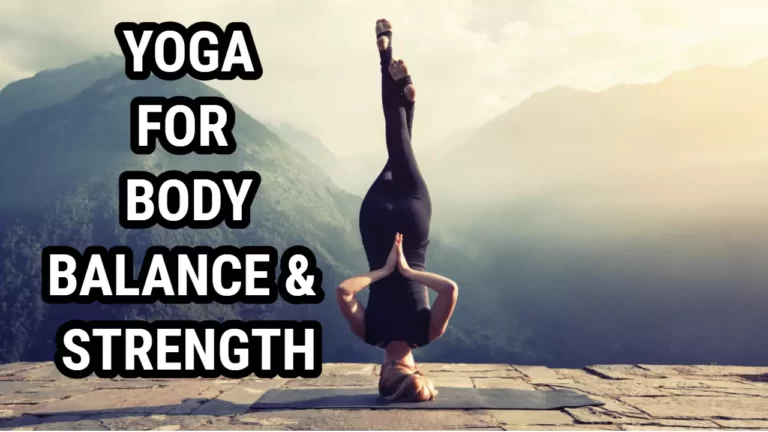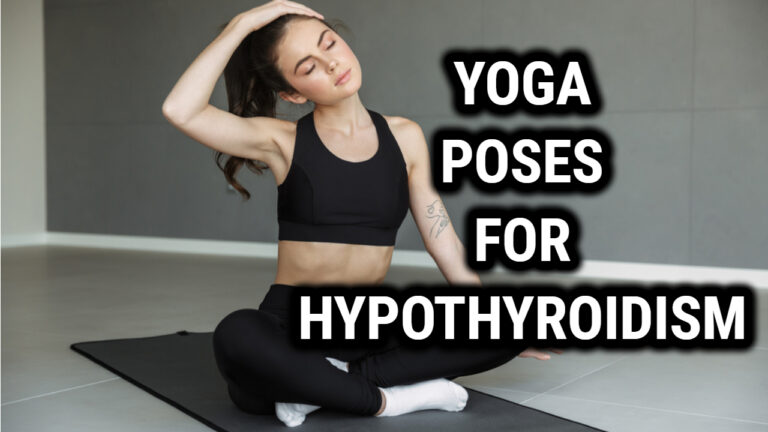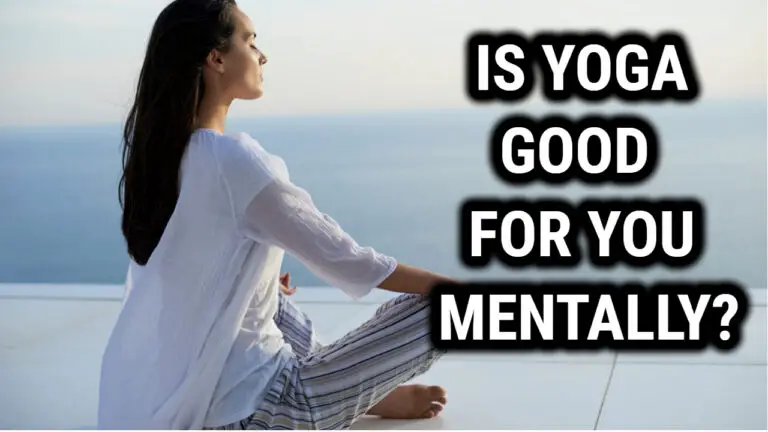Is Yoga Just About Weight Loss Or Also A Way Of Life?

Yoga is no longer just a form of exercise, it has become a way of life for many people around the world. It has been used to help people lose weight, gain strength and flexibility, and reduce stress levels. But what is yoga really about? Is it just about weight loss or is there more to it? This article explores the deeper meaning behind yoga and discusses whether or not it should be seen as a way of life.
The practice of yoga dates back centuries and has long been used for physical and spiritual development. It was first developed in India as part of the Vedic religion, but it quickly spread to other parts of the world. In recent years, its popularity has grown exponentially in Western countries due to its many health benefits. People now turn to yoga not only for physical health but also for mental clarity, stress relief, and emotional balance.
Despite its growing popularity, there are still those who view yoga as nothing more than an exercise program designed solely for weight loss. But this perspective is short-sighted; yoga offers much more than just physical benefits. It can provide an opportunity for greater self-awareness and personal growth that goes beyond any superficial definition of “exercise.” So if you’re looking to improve your overall wellbeing, then consider taking up yoga – it could be your key to unlocking a healthier lifestyle.
History Of Yoga
Yoga has a long and storied history that spans thousands of years. While its exact origins remain unclear, yoga is believed to have originated around 5000 BCE. This ancient practice has grown and evolved over the millennia into a tradition that is beloved by millions of people around the world today. Here is a timeline of yoga’s development:
- 5000 BCE: Yoga is believed to have originated in India during this time period.
- 1000-500 BCE: Evidence suggests that yoga was practiced throughout India during this era, with some of the earliest written references to yoga appearing in Hindu scriptures known as the Vedas.
- 500-300 CE: During this period, Hatha Yoga was developed as an extension of Raja Yoga, which focused on meditation and breath control techniques.
- 800-1100 CE: During this era, texts such as the Patanjali Sutras began to be written and taught, further advancing the development of yoga throughout India. The practice of yoga has continued to evolve right up until modern times; however, it still remains true to its roots in Indian culture and values. Today, many practitioners continue to draw on these ancient traditions while finding ways to make them relevant for their own lives and circumstances. As such, yoga is not just a way of life but also an ever evolving practice that continues to provide physical and spiritual benefits for all those who practice it faithfully.
Different Types Of Yoga
Yoga is more than just a way to lose weight; it’s also a lifestyle. There are many different types of yoga, each with its own unique benefits and approach.
Vinyasa yoga is a type of flow-style yoga that combines sequences of poses with breathwork.
Hot yoga is done in a heated room, which can help the body to relax and deepen postures.
Yin yoga is great for improving flexibility, as it focuses on stretching the connective tissues that hold the body together.
Power yoga is an intense form of vinyasa-style practice that helps build strength as well as improve stamina and stamina endurance.
Finally, restorative yoga is a gentle practice designed to reduce stress and tension in the body by using props such as blocks and bolsters to support postures. Each type of yoga has something special to offer practitioners, so exploring them all may be beneficial in order to find the best fit for your lifestyle.
The Physical Benefits of Yoga
Yoga is a form of exercise that offers numerous physical benefits. It is a low-impact way to improve overall health and fitness. Here are some of the physical benefits of yoga:
- Improved flexibility: Yoga helps to improve flexibility by stretching the muscles. This can help to reduce the risk of injury and improve posture.
- Increased strength: Yoga can help to increase strength by using body weight as resistance. This can help to build muscle and improve overall fitness.
- Better balance: Many yoga poses require balance, which can help to improve balance and coordination over time.
- Reduced back pain: Yoga can help to alleviate back pain by increasing flexibility and muscle strength. In one study, people with back pain who did two 90-minute sessions of yoga a week for 24 weeks experienced a 56% reduction in pain.
- Improved circulation: Yoga can help to improve circulation by increasing blood flow to the muscles and organs.
- Reduced stress: Yoga can help to reduce stress by promoting relaxation and mindfulness. This can help to lower blood pressure and improve overall health.
Overall, yoga is a great way to improve physical health and fitness. It offers a low-impact way to improve flexibility, strength, balance, and circulation. Additionally, it can help to reduce back pain and stress, which can improve overall health and wellbeing.
The Mental Benefits of Yoga
Yoga is not just a physical exercise, it is also a mental exercise that provides numerous mental benefits. Here are some of the mental benefits of practicing yoga:
- Reduced stress and anxiety: Yoga helps reduce stress and anxiety by promoting relaxation and reducing the production of stress hormones.
- Improved mood: Yoga can improve mood and increase feelings of well-being by releasing endorphins, the body’s natural feel-good chemicals.
- Better sleep: Practicing yoga can improve the quality of sleep and help individuals fall asleep faster.
- Increased focus and concentration: Yoga involves focusing on the breath and body, which can improve focus and concentration both on and off the mat.
Yoga also has been shown to have positive effects on mental health conditions such as depression and post-traumatic stress disorder (PTSD). A study published in the Journal of Alternative and Complementary Medicine found that practicing yoga for 12 weeks significantly reduced symptoms of depression and anxiety in participants.
Additionally, a study published in the Journal of Traumatic Stress found that yoga significantly reduced symptoms of PTSD in women who had experienced trauma.
Overall, practicing yoga can have numerous mental benefits, making it a valuable practice for not only physical health but also mental health and well-being.
The Spiritual Benefits of Yoga
Yoga is not just a physical exercise, but also a spiritual practice that can bring a sense of calmness, inner peace, and spiritual growth. The spiritual benefits of yoga are often overlooked, but they are just as important as the physical benefits.
One of the most significant spiritual benefits of yoga is its ability to reduce stress and anxiety. Yoga helps to calm the mind and reduce the constant chatter that can cause stress and anxiety. By practicing yoga regularly, individuals can learn to live in the present moment, which can lead to a greater sense of peace and contentment.
In addition to reducing stress and anxiety, yoga can also help individuals connect with their inner selves. Through meditation and deep breathing exercises, yogis can gain a greater understanding of their thoughts, emotions, and desires. This self-awareness can lead to a greater sense of purpose and direction in life.
Another spiritual benefit of yoga is its ability to promote compassion and empathy. By practicing yoga, individuals can learn to be more mindful of their thoughts and actions, which can lead to a greater sense of compassion for others. This increased sense of empathy can lead to more meaningful relationships and a greater sense of connectedness with others.
Overall, the spiritual benefits of yoga are just as important as the physical benefits. By practicing yoga regularly, individuals can experience a greater sense of calmness, inner peace, and spiritual growth.
Also Read: Can Yoga Actually Help Reduce Work-Related Stress?
Yoga as a Lifestyle
Yoga is not just a physical exercise, but a way of life. It is a holistic approach to health and wellness that encompasses the mind, body, and spirit. Practicing yoga regularly can help you cultivate mindfulness, reduce stress, and improve your overall well-being.
One of the key principles of yoga is ahimsa, which means non-violence or non-harming. This principle extends beyond just physical harm and includes mental and emotional harm as well. By practicing ahimsa, you can learn to be more compassionate towards yourself and others, and create a more peaceful and harmonious world.
Another important aspect of yoga as a lifestyle is the emphasis on self-care. Yoga encourages you to take care of your body, mind, and spirit through practices such as meditation, pranayama (breathing exercises), and asana (physical postures). By taking care of yourself, you can improve your overall health and well-being, and be better equipped to handle the challenges of daily life.
Yoga also teaches us to live in the present moment and let go of attachments to the past or worries about the future. By practicing mindfulness and being fully present in each moment, we can experience greater joy and fulfillment in our lives.
Overall, yoga as a lifestyle is about cultivating a deeper connection with ourselves and the world around us. It is a path towards greater self-awareness, compassion, and inner peace.
How To Get Started With Yoga
It’s time to take the plunge and get started with your yoga practice! After learning about its spiritual components, it is now time to roll out your mat and get into some poses. Fortunately, getting started with yoga doesn’t require a great deal of money or effort; all you need is a yoga starter kit, which can be acquired for a modest price.
First things first: make sure you have access to a good quality yoga mat along with some basic equipment, such as blocks and straps. You may also want to invest in a few yoga classes so that you can learn the proper technique for each of the poses. This will help ensure that you are doing them safely and correctly.
For those who are new to yoga or just looking for an easy way to get started without investing in equipment or classes, there are plenty of free resources available online such as YouTube videos and tutorials.
These provide step-by-step instructions on how to perform various poses, as well as tips on how best to use the equipment if necessary.
It is also important to remember that there is no right or wrong way when it comes to practicing yoga; everyone has their own unique style and approach that works best for them. So don’t be afraid to experiment with different poses until you find what works best for you!
Yoga can be an incredibly powerful tool for cultivating inner peace while simultaneously improving physical health and wellbeing. With a little bit of patience, dedication, and guidance from experienced instructors or online tutorials, anyone can start their journey towards living a healthier lifestyle through yoga today.
Related Read: Journey to Inner Peace with Dhyana Yoga Poses: Unlock Your True Potential
Conclusion
Yoga is a practice that can offer many benefits beyond weight loss. It is a way of life that promotes physical, mental, and emotional well-being. While weight loss can be a positive side effect of a regular yoga practice, it should not be the sole focus.
Research has shown that yoga can help manage stress, improve mood, and promote healthy eating habits. It can also increase flexibility, strength, and balance, which can improve overall physical health and prevent injuries.
Furthermore, yoga can be a tool for self-discovery and personal growth. Through the practice of mindfulness and meditation, individuals can develop a deeper understanding of themselves and their place in the world.
Ultimately, whether someone practices yoga for weight loss or as a way of life, the benefits are numerous and far-reaching. It is a practice that can be adapted to fit any lifestyle and can be enjoyed by people of all ages and fitness levels.





